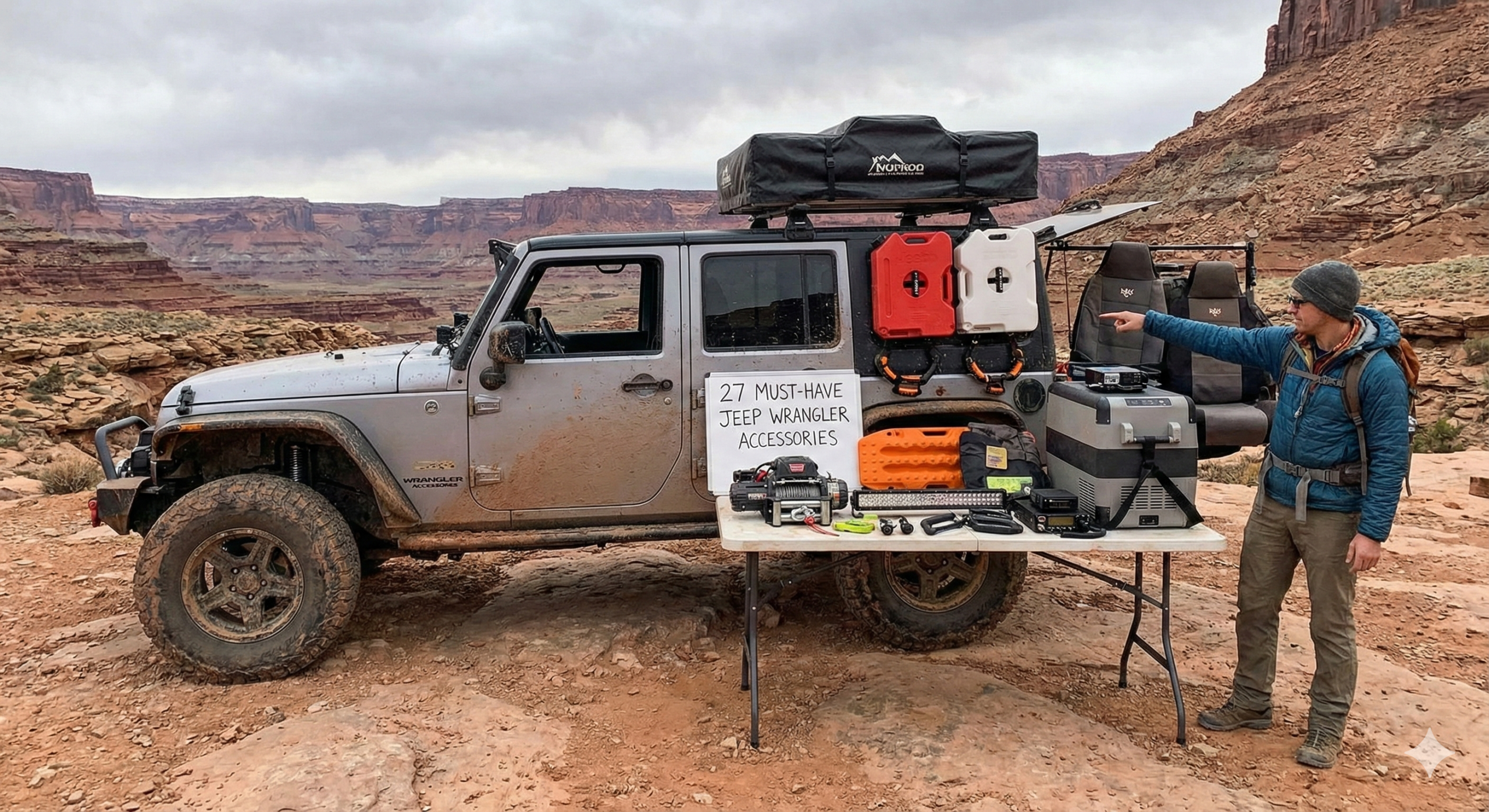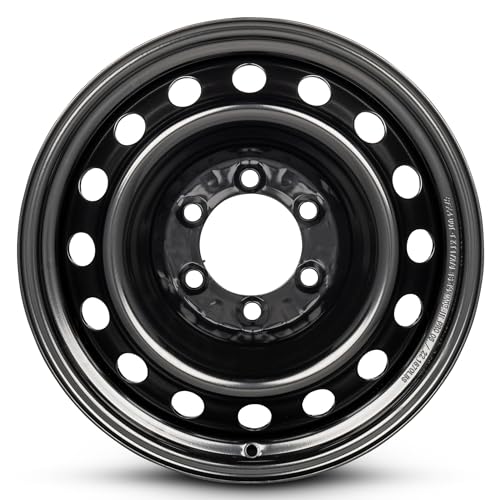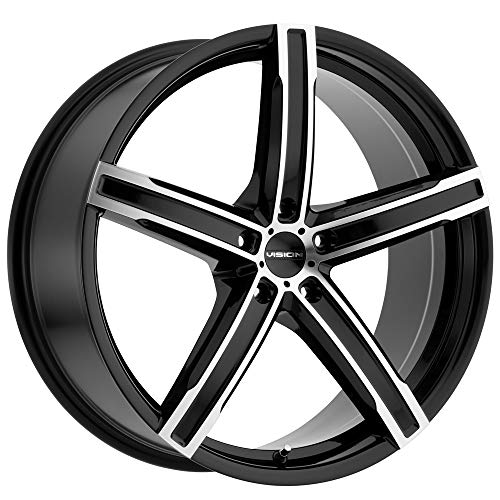Yes, you can put 35 inch tires on a stock Jeep. If you’re looking to enhance the appearance and off-road performance of your stock Jeep, upgrading to 35 inch tires can be a great option.
These larger tires provide increased ground clearance, improved traction, and a more aggressive look. However, before making the switch, it’s crucial to consider a few factors such as potential modifications needed, potential impact on fuel efficiency, and the ability of your stock suspension and drivetrain to handle the larger tires.
By doing proper research and consulting with experts, you can ensure a safe and successful upgrade to 35 inch tires on your stock Jeep.
Factors To Consider Before Upgrading To 35 Inch Tires
Before upgrading to 35 inch tires on a stock Jeep, it is important to consider a few factors.
Impact on Suspension: Upgrading to larger tires can have a significant impact on the suspension of the Jeep. The additional weight and size of the tires may put more strain on the suspension system, potentially leading to decreased performance and increased wear and tear.
Effect on Fuel Efficiency: Installing 35 inch tires on a stock Jeep can also affect fuel efficiency. Larger tires can create more rolling resistance, requiring the engine to work harder and consuming more fuel. It is important to keep in mind that a decrease in fuel efficiency may occur after the tire upgrade.
Clearance and Body Modifications Needed: One should also consider the clearance and body modifications required when fitting 35 inch tires on a stock Jeep. The larger tires may affect the distance between the wheels and the fenders, potentially requiring modifications to the suspension or body of the Jeep to accommodate the increased size.
Pros And Cons Of Mounting 35 Inch Tires On A Stock Jeep
Mounting 35 inch tires on a stock Jeep can provide both pros and cons. An important advantage is the improved off-road capability these larger tires can offer. They can handle rough terrain better and provide better traction, allowing you to conquer challenging trails. Additionally, they provide enhanced ground clearance, which is essential when navigating through rocky or uneven landscapes.
However, it’s important to consider the potential risks and drawbacks. Putting larger tires on a stock Jeep can put additional strain on the vehicle’s suspension and drivetrain components. This can lead to increased wear and tear, potentially resulting in more frequent repairs and maintenance. Moreover, larger tires can also negatively impact fuel efficiency and handling on paved roads. Extended fender flares or lift kits may be necessary to avoid rubbing and maintain proper clearance.
How To Safely Install 35 Inch Tires On A Stock Jeep
Installing 35 inch tires on a stock Jeep can be done safely, but it requires careful consideration and a few adjustments. One of the first things to consider is selecting the right tires and wheels. It’s important to choose tires with the proper load capacity for your Jeep’s weight. Take into account the weight of any additional equipment you may have added, such as bumpers or winches.
Understanding load capacity and maintaining the proper PSI (pound per square inch) is crucial. Consult your Jeep’s manual or a reputable tire professional to determine the appropriate PSI for your specific setup.
Additionally, adjustments to the axles and gears may be necessary. A stock Jeep may not have the necessary clearance for larger tires, so modifications such as lifting the suspension or installing wheel spacers might be required.
By following these steps and ensuring your tires and axles are correctly matched, you can safely and confidently enjoy the benefits of 35 inch tires on your stock Jeep.
Step-by-step Guide To Installing 35 Inch Tires
Preparing the Jeep:
Before installing 35 inch tires on a stock Jeep, it is important to prepare the vehicle properly. Start by ensuring you have the necessary tools and equipment including a jack, wrench, and torque wrench. Next, check the Jeep’s suspension and make any necessary adjustments or upgrades to accommodate the larger tires. This may involve installing a lift kit or leveling kit.
Removing the Existing Tires:
Once the Jeep is adequately prepared, begin by removing the existing tires. Use a jack to lift the vehicle off the ground and secure it with jack stands. Carefully loosen and remove the lug nuts, then gently slide the tires off the wheel hubs. Take the time to inspect the brakes and suspension components while the tires are off, as any issues should be addressed before moving forward.
Mounting the New Tires and Wheels:
With the old tires removed, it is time to mount the new 35 inch tires and wheels. Start by aligning the lug holes on the wheels with the wheel studs, then slide the wheels onto the hubs. Hand-tighten the lug nuts to ensure the wheels are securely in place. Use a torque wrench to tighten the lug nuts to the manufacturer’s recommended torque specifications.
Ensuring Correct Alignment and Balancing:
After mounting the new tires and wheels, it is crucial to check the vehicle’s alignment and balance. Improper alignment can lead to uneven tire wear and handling issues. Take the Jeep to a professional alignment shop or use a DIY alignment tool to ensure the tires are properly aligned. Additionally, have the tires balanced to minimize vibrations and create a smooth ride.
Additional Modifications And Upgrades For Optimal Performance
Can You Put 35 Inch Tires on a Stock Jeep
Additional Modifications and Upgrades for Optimal Performance
Suspension System Enhancements
When it comes to upgrading a stock Jeep to accommodate 35 inch tires, it is essential to consider additional modifications and upgrades for optimal performance. One area to focus on is the suspension system. A lift kit can provide the necessary clearance for larger tires, allowing for increased ground clearance and improved off-road capability. Upgrading the shocks and struts can also enhance the overall ride quality and stability. Additionally, installing heavy-duty control arms and sway bar links can help minimize body roll and improve handling.
Brake and Steering System Upgrades
To ensure optimal performance when running 35 inch tires on a stock Jeep, it’s crucial to upgrade the brake system. Installing larger brake rotors and calipers can improve stopping power and reduce brake fade, especially during off-road adventures. Upgrading to performance brake pads can also provide better braking performance. Additionally, enhancing the steering system is necessary to handle the increased weight and size of the larger tires. Upgrading to heavy-duty steering components, such as upgraded tie rods and steering stabilizers, can help maintain control and responsiveness.
Reinforcing the Frame and Chassis
When running 35 inch tires on a stock Jeep, reinforcing the frame and chassis becomes crucial. Strengthening the frame with frame stiffeners can help prevent flex and improve overall stability. Additionally, adding skid plates can protect vital components from off-road hazards. It’s also important to reinforce the axle and differential housing to handle the increased stress. This can be achieved through the installation of heavy-duty differential covers and axle trusses. By addressing these key areas, a stock Jeep can be properly equipped to handle the demands of 35 inch tires.
Frequently Asked Questions On Can You Put 35 Inch Tires On A Stock Jeep
Can You Put 35-inch Tires On A Stock Jeep Wheels?
Yes, you can put 35-inch tires on a stock Jeep wheels.
What Size Lift Do I Need For 35-inch Tires Jeep?
For 35-inch tires on a Jeep, you’ll typically need a lift of at least 3-4 inches to accommodate the larger size. This will provide proper clearance and prevent rubbing or damage while off-roading. Consider consulting with a professional to determine the best lift size for your specific Jeep model.
Can You Put 35-inch Tires On A Stock Jeep Rubicon?
Yes, you can put 35-inch tires on a stock Jeep Rubicon.
What Is The Biggest Tire You Can Put On A Jeep Wrangler Without A Lift?
The biggest tire you can put on a Jeep Wrangler without a lift is usually around 33 inches.
Can You Put 35-inch Tires On A Stock Jeep?
Yes, you can put 35-inch tires on a stock Jeep, but it’s important to consider some factors like clearance, suspension, and potential modifications.
Will 35-inch Tires Affect My Jeep’s Performance?
Yes, installing 35-inch tires may impact your Jeep’s performance, mainly in terms of acceleration, fuel efficiency, and handling. It’s advisable to make the necessary adjustments to accommodate the larger tires.
Do I Need To Lift My Jeep To Fit 35-inch Tires?
To fit 35-inch tires on your Jeep, it’s recommended to have a lift kit installed. This will provide the necessary clearance for the tires and prevent rubbing against the fenders.
How Much Does It Cost To Install 35-inch Tires On A Stock Jeep?
The cost of installing 35-inch tires on a stock Jeep can vary depending on factors like the brand of tires, labor, and any additional modifications needed. On average, expect to spend around $1,500 to $2,500.
Conclusion
To sum it up, putting 35 inch tires on a stock Jeep can be a tempting idea for off-road enthusiasts. However, it’s crucial to consider the potential drawbacks and limitations this modification can have on your vehicle’s performance, including decreased fuel efficiency and strain on the suspension system.
Furthermore, it’s important to prioritize safety and consult with professionals before making any changes. Ultimately, the decision should be based on careful consideration of your specific needs and the capabilities of your Jeep. Remember, it’s essential to strike a balance between aesthetics and functionality to ensure a smooth and enjoyable ride.




Leave a Reply